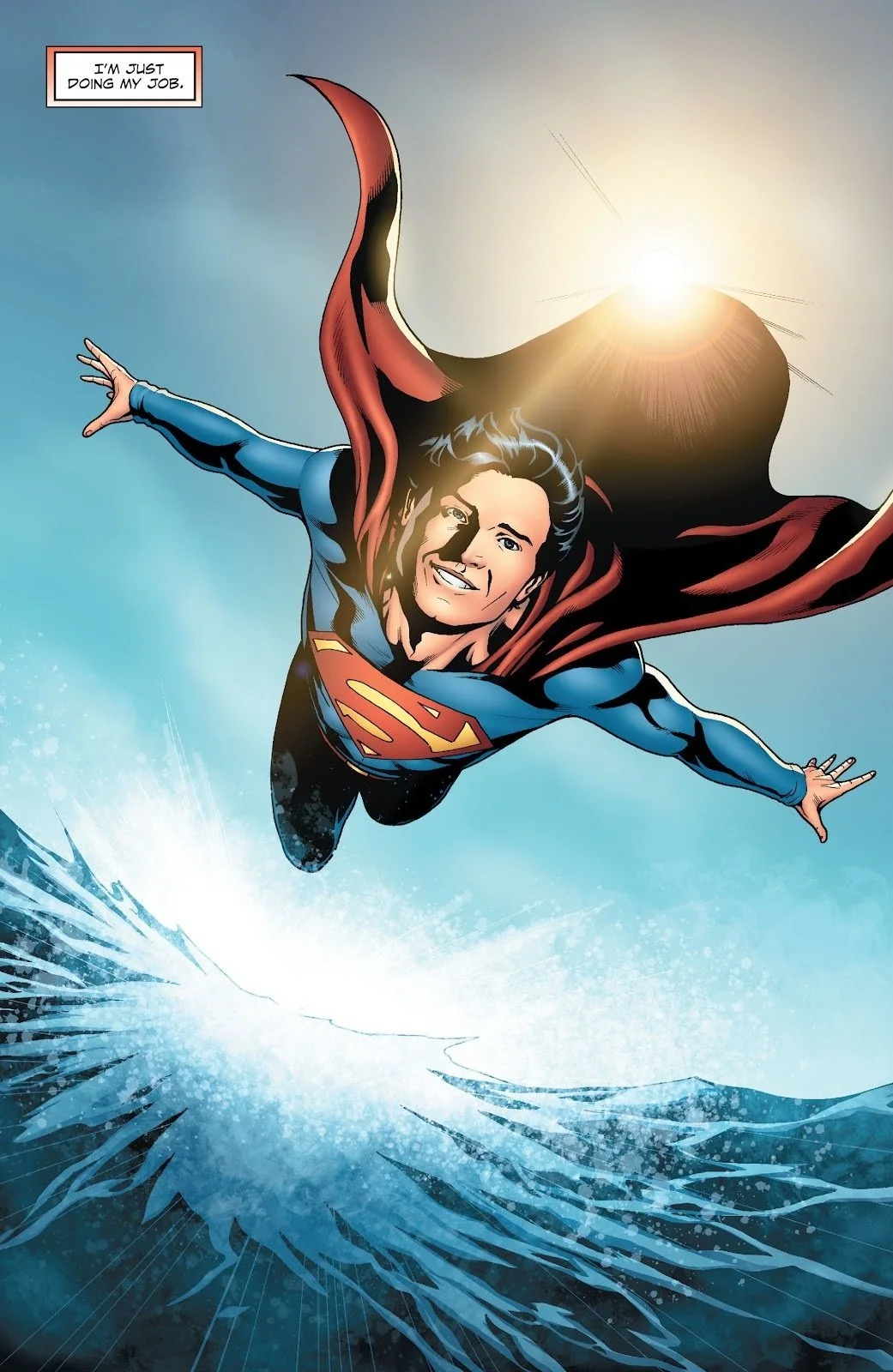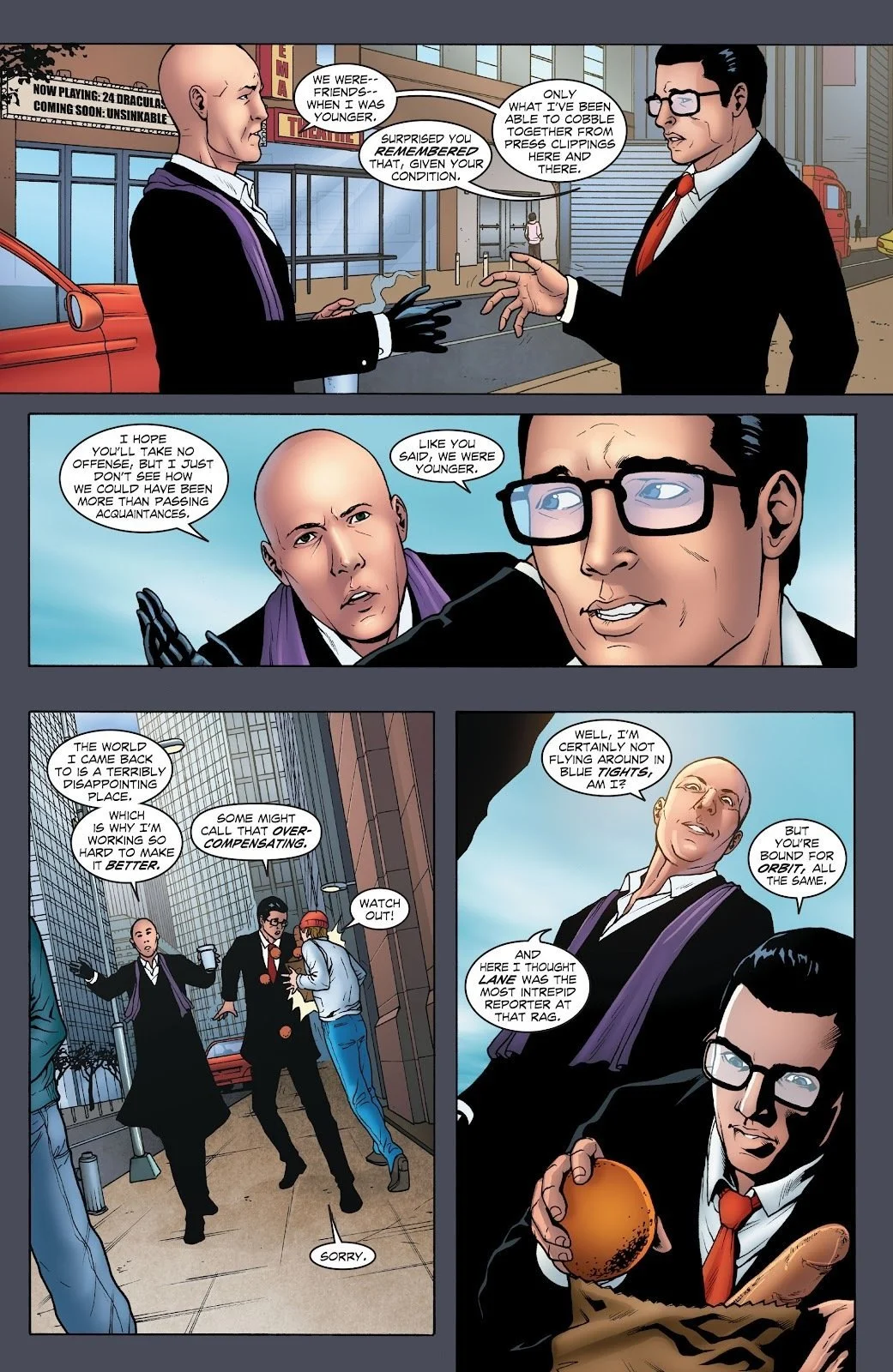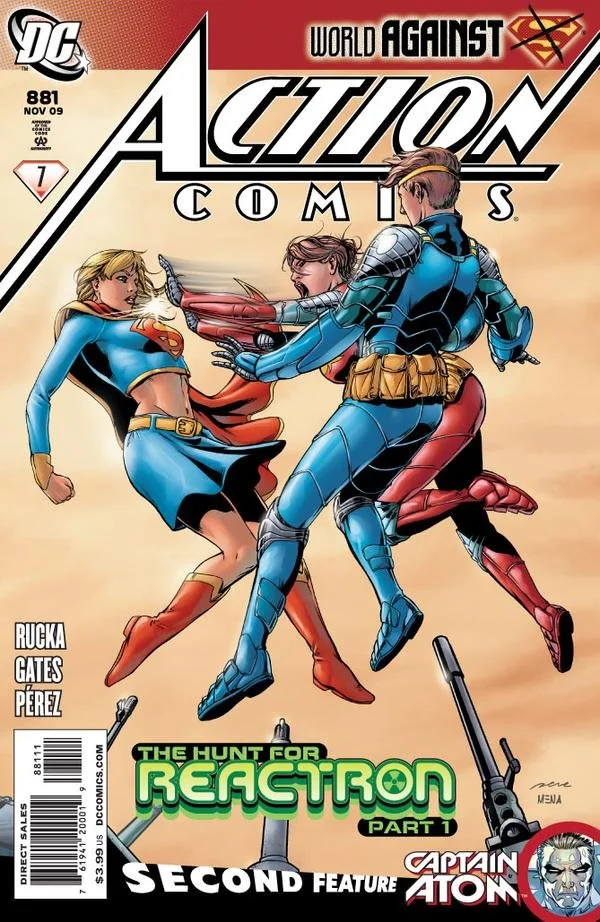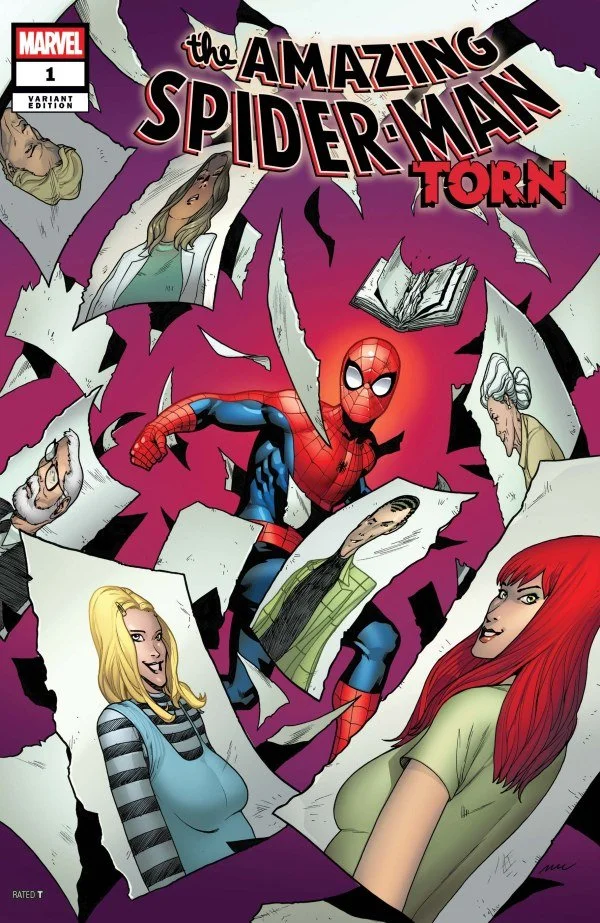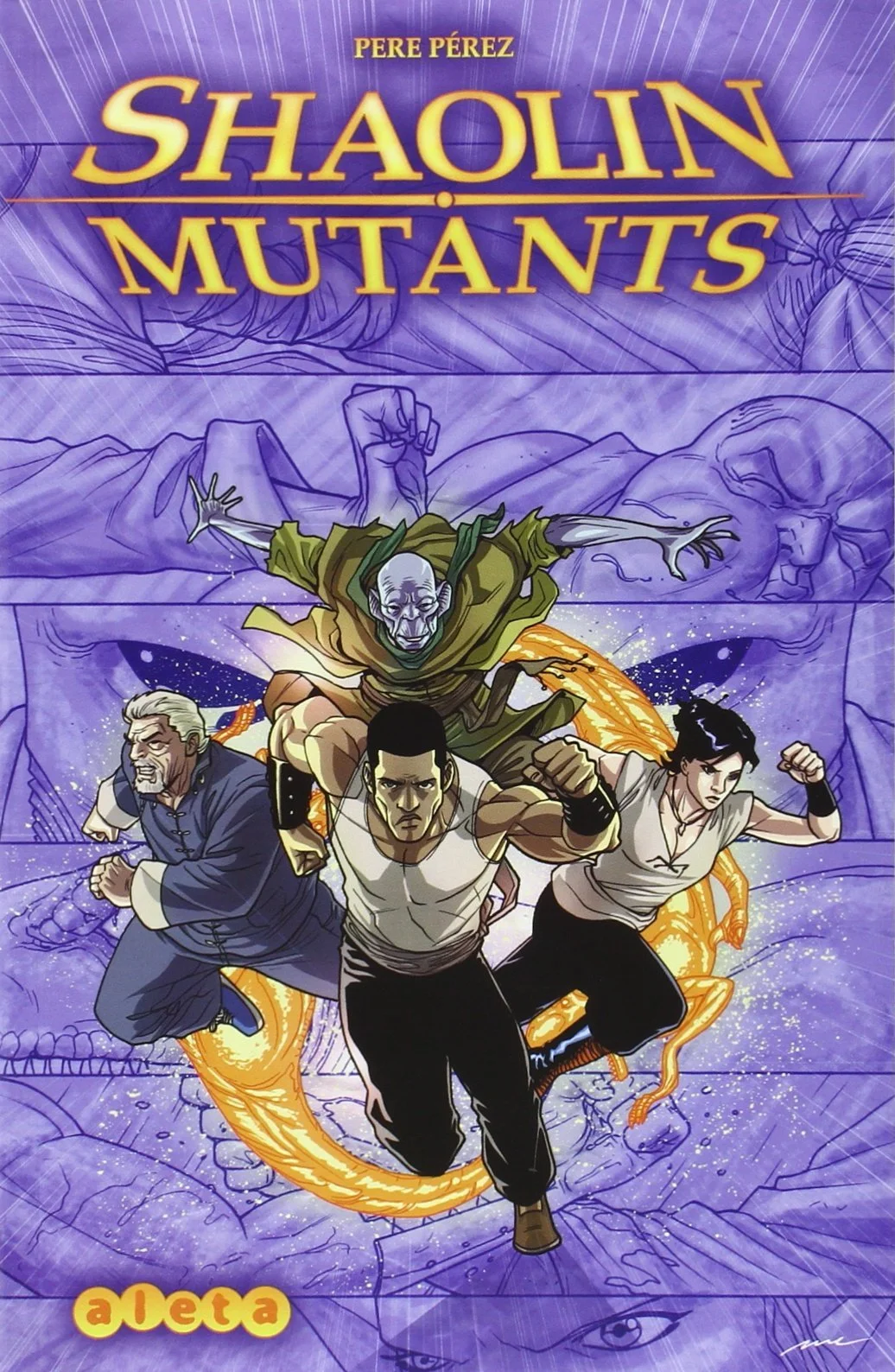EP05 - Pere Pérez
PERE PÉREZ -
INTERVIEW 2025
I appreciate you taking the time to do this. It’s been a real honor to speak with artists whose work and style continues to inspire me. The first time I came in contact with your work was in the Smallville Season 11 comic, which I was super (pun intended) excited about, being a big fan of the show in the first place.
Usually I start with the beginning, but in this case let me ask you about that project first, how did that start and what was your experience on it, were you a fan of the show before?
Bryan Q. Miller and I had been working together for a while on Batgirl, and we were both very happy working together, so when he moved to writing Smallville, I was offered the gig. I saw the show when it came out but I eventually lost interest around season 2 or 3, so when I got the job I watched the last few seasons, when Bryan was working on them, and it got me interested again. I must admit my experience there was bittersweet, on one hand the script was great, and it was a blast to finally draw Superman after being on Action Comics for almost a year without Superman being on the title; on the other hand, there were a series of factors that make me not be happy with what I did on the book, like art choices I made at the time that I would have done differently now. But in hindsight, I learned a lot from the mistakes I made there.
Smallville: Season 11 #1 - Art by: Pere Pérez
When did you decide that you wanted to work in comics?
I guess it was when I was 14 or so, when the idea of making that my job started popping out in my mind, but not being sure about it being a realistic aspiration. I remember talking about those doubts to a teacher I had in high school, and she told me that I shouldn’t limit myself, and let life itself put those limitations instead. That, and the fact that I started seeing Spanish artists working for Marvel and DC, especially Carlos Pacheco, made a big impact on me and I decided to go for it and never look back.
Who’s art was most influential growing up and which comics shaped you most as an artist and as a fan?
I guess on the early days it was Akira Toriyama, whose work I was hooked to before wanting to be an artist, and motivated me to draw for fun. I also remember enjoying Uderzo on Asterix, and the G. I. Joe comics. Then it was Carlos Pacheco as I mentioned, and later came the work of Scott Campbell, Kevin Maguire, Adam Hughes, Alan Davis, Brian Hitch and many others.
Among the indie publishers you’ve worked for (Dynamite, Valiant, Devil’s Due Publishing) from which one have you learned the most as an artist and why?
I’d say Valiant. It was the moment where I realized that doing what I thought was expected from me had led to wrong artistic choices like I mentioned on Smallville. While at Valiant I started allowing myself to have more fun and experiment, while benefitting from working with great writers, mainly Fred Van Lente, who wrote stuff that motivated me and pushed me in new exciting directions.
How does working with them compare to let’s say a bigger one like Marvel or DC?
I can’t see any big difference, my approach to work was pretty much the same.
At DC you’ve drawn for Batgirl and Action Comics as well among other titles, can you talk about your process working on those books, what memories do you have of them and how did it evolve your craft during those times?
I have great memories from those books. On Action, it was my first ongoing series, and also got to work with Greg Rucka, which was great and I learned a lot.
Action Comics #881 - Art by: Pere Pérez
On Batgirl I started to feel more comfortable and draw with less effort, so I started having more fun. Also that’s the moment where I moved away from high contrast scanned pencils and started inking my pages. That tool change also led to stylistic changes that made my pages look better.
You’ve worked on quite a few Marvel comics that people really love such as Ironcat, Carnage, Rogue & Gambit to name a few. How does the process on each one differ and how do you approach them?
On Rogue and Gambit I started doing digital pencils which I printed and inked traditionally, and that was another big step because it allowed me to make tighter and more elaborate work while saving some time. By the time I got to Iron Cat and Carnage I was doing both full digital inked pages as well as printing digital pages and inking them. All the other differences between these books comes from the different writing styles of all those great writers, and what the story we were telling called for. For example, on Iron Cat I experimented with two different finishing styles for the flashbacks which had a big importance on that story, and on Carnage I focused on depicting the violence as graphically and brutal as we were allowed to, as well as having heavier blacks than I usually do to enhance the ominous mood of the book.
As a follow up question to this, which one was your favorite to work on, or have the best memories of?
This is a tough one, because all of them had their little different things I enjoyed, but I guess I’ll say Spider-Woman with Karla Pacheco. We really connected on a professional and personal level, and she is such a generous writer that allowed me to contribute a lot of ideas to the series, and come up with most of my own action scenes. We were able to create a lot of new characters, and also that’s been the most time I have spent on the same series. All of those reasons make it a very special book to me.
TVA is one of the best new titles. Pairing up Gambit, Ghost-Spider (Gwen), Captain Carter with other multiversal players was a really cool move. Can you talk about working on the title and share your workflow on it?
As you said, drawing all those characters on the same team was pretty cool, and the riffs to the Loki tv show made it an interesting book to work on.
What can you tease about The Amazing Spider-Man: Torn? J. Michael Straczynski is returning to write Spider-Man after almost 20 years and he’s been, with good reason, a fan favorite. How is it working with him?
It’s been a high point in my career. I’ve been a fan of his books for many years, and I can tease that he is as good as ever here. He nails the voices of all the characters we know and love, and is writing an exciting and emotional story. Every time I get a new script I am reminded of how lucky I am to be working on my favorite Marvel character with one of my all time favorite writers. It doesn’t get any better than this.
The Amazing Spider-Man: Torn #1 - Art by: Pere Pérez
Do you have plans to release a creator owned comic book? If so, what would you say are your biggest influences, the books or stories that had the most impact on you as an artist?
I have done that several times in the past, but they have only been published in Spain and some other European countries. I’d love to have those published in America, or being able to do a new one, either as a complete artist, or with one of my usual writer partners. I have several projects in different stages of development, but since they’re keeping me busy and happy at Marvel, I keep postponing them. But I’d like to finish some of them in the future, that’s for sure.
Where do you find inspiration and recharge when you feel burned out? For me it’s usually taking a long walk, reading or listening to music, I especially like movie soundtracks.
For me it’s martial arts. Nothing empties your mind quicker than a few punches coming your way. Then there’s meditation and tai chi, reading, cinema and traveling. Also I try not to take on more projects than I’m able to handle and I try to finish my pages as quickly as I possibly can while still keeping the quality up, to be able to have a few hours of rest every day and go back at it the next day with renewed energy and enthusiasm.
One of my favorite questions, what does your sketchbook look like, what kind of tools do you use?
To be honest, I don’t sketch as much as I used to, and that’s a conscious decision. Sketching is great to improve and become better, but it’s also doing the same activity you are doing at work in your free time. So I prefer to use that time doing something radically different, you don’t improve your technique with that, but you get motivation and inspiration coming from unexpected places.
That being said, when I do I use the same tools as in my pages, and also copic markers. Also there’s a lot of pencil little ideas or scribbles for page layouts or ideas for fights these days.
What is your favorite cover or alternate cover that you worked on, and why?
I like the Spider-Woman #11 variant cover because it was the comeback of her classic looks (more or less), and also it’s colored by my friend Daniel Acuña who can make anybody’s draw look ten times cooler with his colors. I also like Iron Cat #1, I'm happy with its energy, and the colors by David Curiel are stunning.
Spider-Woman #11 - Art by: Pere Pérez
Iron Cat #1 - Art by: Pere Pérez
If you could recommend a comic to someone who never saw your work before, which one would be? Alternatively, if there is, which is the one comic that you didn’t like for any reason, that you worked on?
I always recommend Spider-Woman, or if it’s a Spanish reader maybe Shaolin Mutants, my creator owned graphic novel.
Shaolin Mutants - Art by: Pere Pérez
As for the one I don’t like, I wouldn’t say that I don’t like it, but one I would definitely like to remake using my current skills and mindset would be Smallville. I know the book has a lot of fans, because many of them approach me at conventions and tell me so, but I think I could do a much better job now.
Rapid fire question: Are you a morning person or a late night owl? Coffee or tea?
I perform better late, but I try not to go to bed too late and keep a healthy schedule, but mornings are tough for me.
I used to be a tea person, but when my son was born I switched to coffee because of the non sleeping nights and all that. Now that he’s a bit older I switch between tea and coffee, but coffee wins more times than I would like to.
Last one. What was the best and worst advice you received?
The best one, the one that changed my life was definitely the one by that high school teacher I mentioned earlier.
I’m not sure about the worst one, but there’s definitely a pattern. There’s always some advice you take earlier in life made by someone who is as clueless about stuff as you are, but says it with enough confidence that you end up believing in it for years without questioning it, until you discover that’s a lot of bullshit, or maybe that it doesn’t necessarily work for you. My advice about advice, is don’t listen to them too much, unless it’s something you already suspected and were not doing enough to change it. But that is also an advice, so do whatever works for you.
Thanks so much for answering my questions! Wishing you a great day and looking forward to what you do next!
Thank you!
You can follow Pere Pérez on Instagram.

